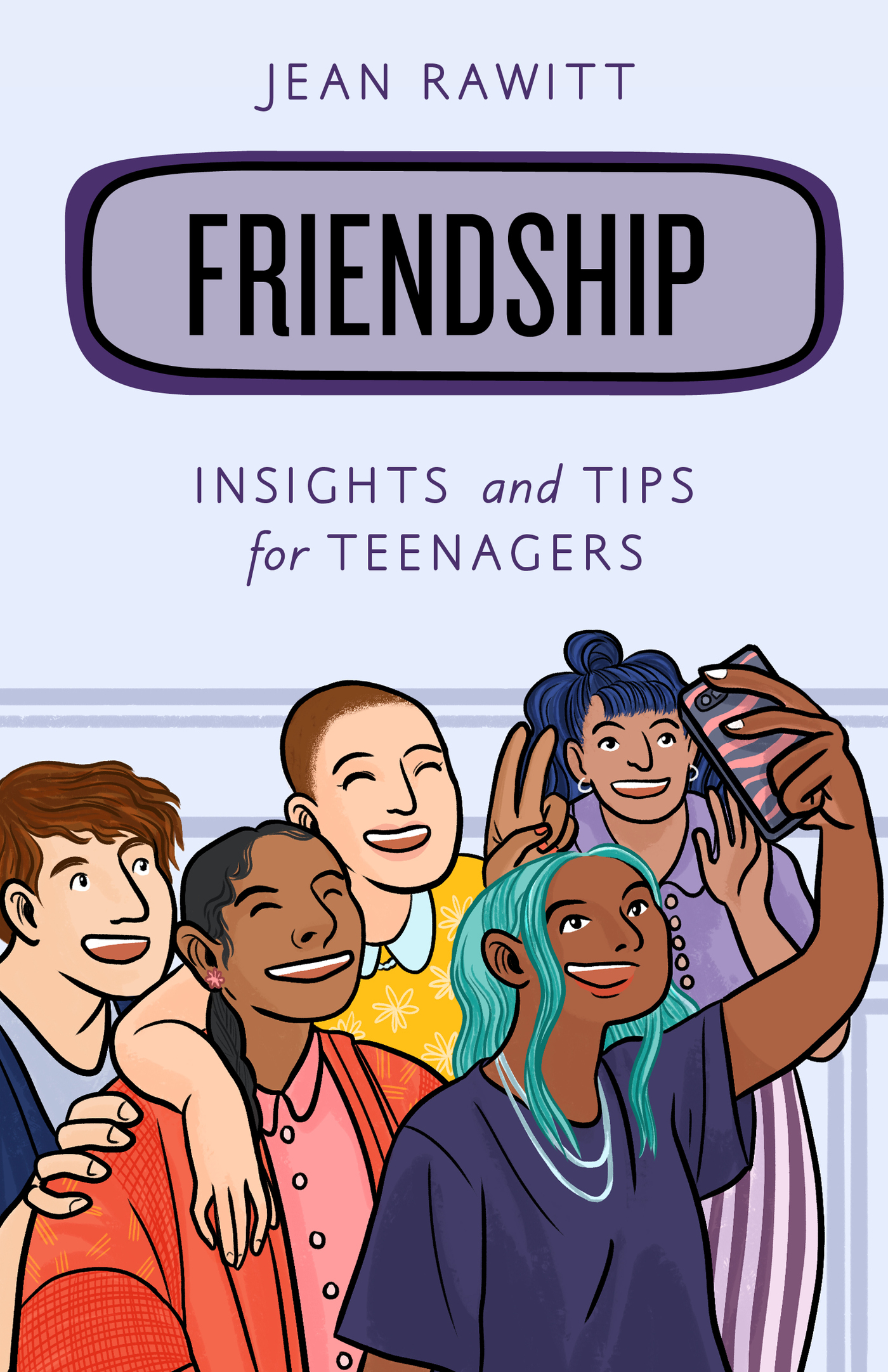The Rowman & Littlefield Empowering You series is aimed to help you, as a young adult, deal with important topics that you, your friends, or family might be facing. Whether you are looking for answers about certain illnesses, social issues, or personal problems, the books in this series provide you with the most up-to-date information. Throughout each book you will also find stories from other teenagers to provide personal perspectives on the subject.
Friendship
Insights and Tips for Teenagers
Jean Rawitt
ROWMAN & LITTLEFIELD
Lanham Boulder New York London
Published by Rowman & Littlefield
An imprint of The Rowman & Littlefield Publishing Group, Inc.
4501 Forbes Boulevard, Suite 200, Lanham, Maryland 20706
www.rowman.com
86-90 Paul Street, London EC2A 4NE, United Kingdom
Copyright 2022 by The Rowman & Littlefield Publishing Group, Inc.
All rights reserved. No part of this book may be reproduced in any form or by any electronic or mechanical means, including information storage and retrieval systems, without written permission from the publisher, except by a reviewer who may quote passages in a review.
British Library Cataloguing in Publication Information Available
Library of Congress Cataloging-in-Publication Data
Name: Rawitt, Jean, 1952, author.
Title: Friendship : insights and tips for teenagers / Jean Rawitt.
Description: Lanham : Rowman & Littlefield, [2022] | Series: Empowering you | Includes bibliographical references and index. | Audience: Ages 1317 | Audience: Grades 1012 | Summary: In this age of social media, where so many friendships exist almost solely online, this book explores the greater meaning of friendship as an enduring and emotionally important area of life. It is a valuable resource for teenagers who are struggling to make friends, are in a toxic friendship, or just want to build more meaningful relationshipsProvided by publisher.
Identifiers: LCCN 2021036221 (print) | LCCN 2021036222 (ebook) | ISBN 9781538152874 (paperback) | ISBN 9781538152881 (epub)
Subjects: LCSH: FriendshipJuvenile literature.
Classification: LCC HM1161 .R39 2022 (print) | LCC HM1161 (ebook) | DDC 177/.62dc23
LC record available at https://lccn.loc.gov/2021036221
LC ebook record available at https://lccn.loc.gov/2021036222
 TM The paper used in this publication meets the minimum requirements of American National Standard for Information Sciences Permanence of Paper for Printed Library Materials, ANSI/NISO Z39.48-1992.
TM The paper used in this publication meets the minimum requirements of American National Standard for Information Sciences Permanence of Paper for Printed Library Materials, ANSI/NISO Z39.48-1992.
Introduction
You Are Not Alone
It seems so easyfriends are friends, arent they? Everyone has friends, dont they? So why a book on friendship?
Friendship can be simple, and friendship can be complicated. Some people find making friends effortless; they dont know how they do it, but they seem to make friends without even trying. For others, making friends seems difficult, intimidating, or even impossible. They may find themselves tongue-tied when talking with strangers, or reluctant to approach someone they dont know at a party. They may be too shy to say hi to an unfamiliar person, or afraid they might look silly or overeager. They may have been hurt by someone they thought was a friend, and are wary of it happening again. But most people want to have friends, and those barriers to friendship can be overcome. As we explore further in this book, we will find that there are ways to think about friendshipeven some toolswhich can help anyone become more comfortable making friends, keeping friends, and valuing what friendship can bring to our lives.
Friendships have provided some of the richest relationships of my life, and they continue to do so, as I hope they will for as long as I live. Perhaps because they mean so much to me, Ive thought a lot about the various friendships Ive had throughout my life, what they meant at different times, what they offered me, andhopefullywhat those relationships meant to the friends with whom I shared them. As I started to think more about it, and began talking with others about what friendship means to them, I found that many of the discussions led back to what friendship meant to people when they were young, and how their friendships developed and deepenedand, sometimes, ended. I knew I wanted to explore that further, and find out from young people themselves what they thought about friendship, and what they could tell me about what friendship meant to them, how their friendships developed, and what joysand difficultiesthey found in friendship.
While for many young people friendships seem to happen naturally, for others making friends is hardand a cause for anxiety and stress. As Ben, one young man I spoke with, put it, There are tons of kids who dont have friends, and want to make friends, but dont know how to do it, or are afraid of trying to do it. But, he continued, Everyone is capable of making friends. Some kids just dont have the confidence to go out and make friends. And it is my hope that some of the insights and tips included in this book will make it easier for those kids to find that making friends is not only possible for them, but a chance for them to find more enjoyment and comfort than they expected.
In writing this book, I asked young people from around the country what friendship meant to them, and I noticed that their answers mirrored remarkably straightforward, and similar, feelings. Henry, a young man in Washington, DC, told me, A friend is someone that you like, someone that you get along with, someone who has interests you share. Jordana, in New York, said that, to her, friendship means a group who have a bond together, who can trust each other, who can rely on each other for different things. From Judith, I heard that friendship meant Relationships with people that Im close with, people I can trust. And Tali told me, A friend is someone who you can always lean on, no matter what, and theyre always there for you when you need them the most. It was clear that, to these young people, there were qualities they hoped for and expected from friendship, and these were qualities I wanted to delve into further.
With the help of the many young people I had the pleasure of interviewing for this book, I have been able to explore how friendships are made, the benefits of friendships, different types of friendships, how one can recognize a true friend, how to recognize and deal with a failed or toxic friendship, and what we learn from friendship. These young people spoke openly about their thoughts and feelings about friendships, their difficulties and their joys, and it is their voices I hope will resonate with you, the reader. Thanks to the young people who shared their insights and stories with me, I have been able to include ideas and suggestions I hope many young people will find useful throughout their lives as they make, and keep, good friends.
Part One
What Is Friendship?
Chapter 1
What Is Friendship, and Why Is It Important?
Friends are the keystone to my happiness.Ben, age eighteen
The Merriam-Webster Dictionary defines a friend as one attached to another by affection or esteem or a favored companion. It describes friendship as the state of being a friend and a friendly feeling or disposition. These seem to be simple definitions, but lets look deeper and think about what friendship really is, and why it is so important in our lives.

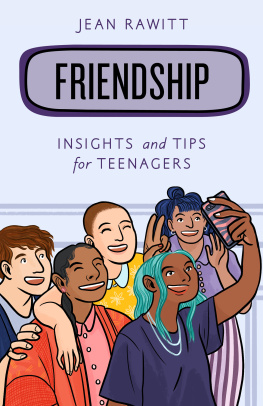

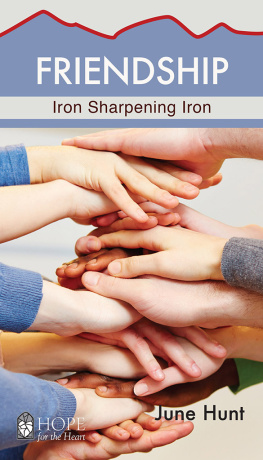
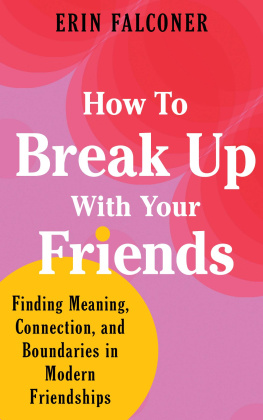
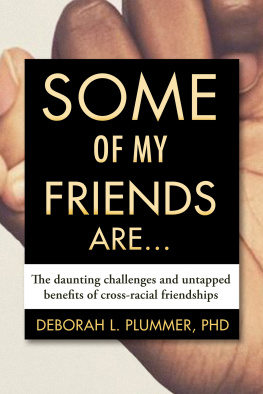
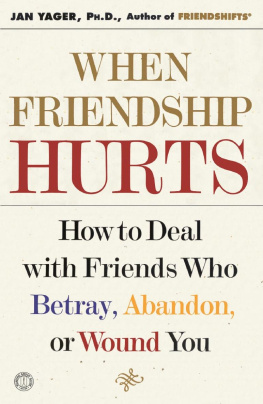
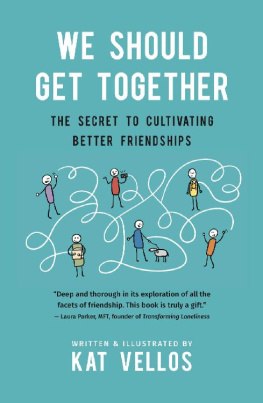
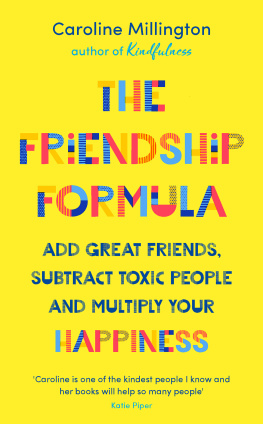
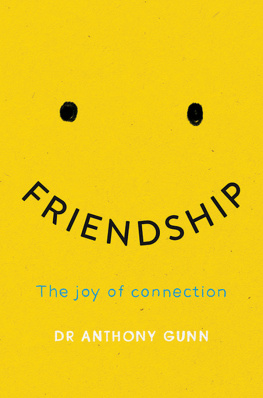
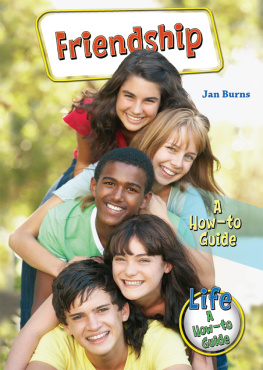
 TM The paper used in this publication meets the minimum requirements of American National Standard for Information Sciences Permanence of Paper for Printed Library Materials, ANSI/NISO Z39.48-1992.
TM The paper used in this publication meets the minimum requirements of American National Standard for Information Sciences Permanence of Paper for Printed Library Materials, ANSI/NISO Z39.48-1992.